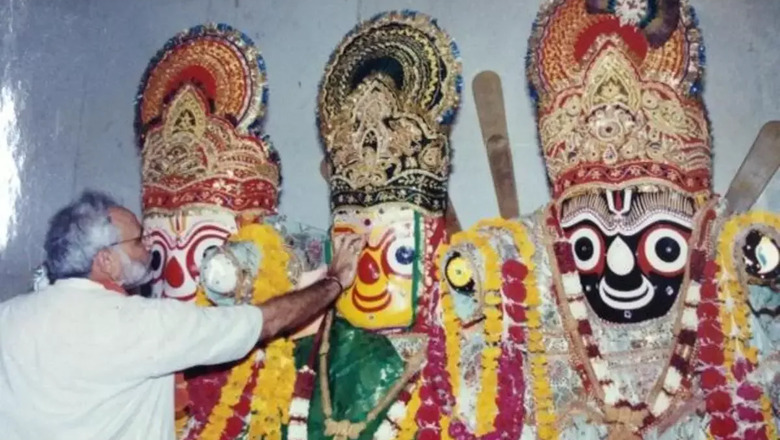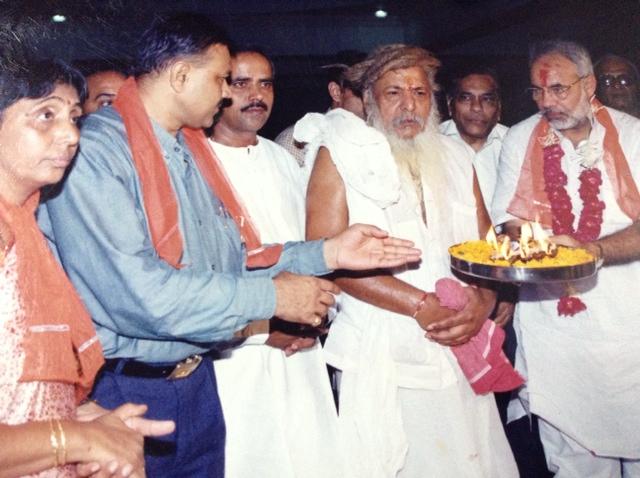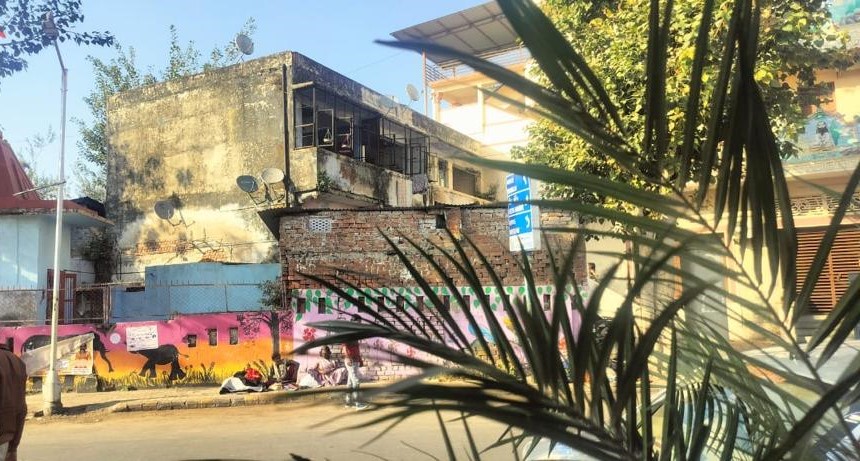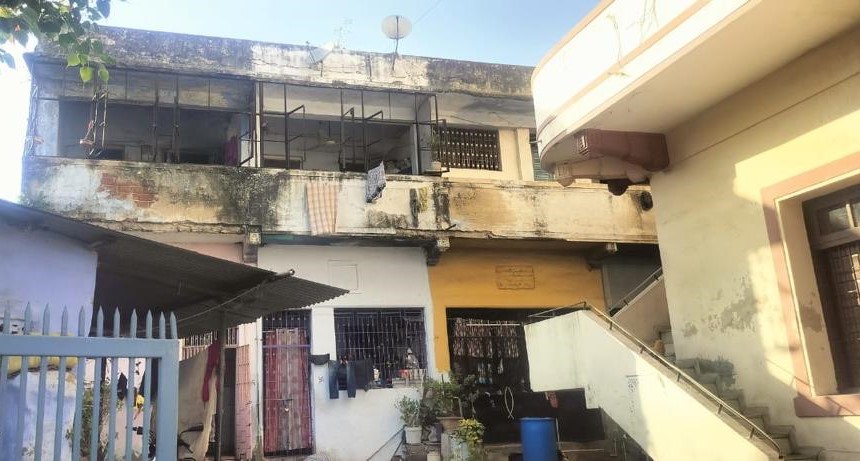
views
Modi’s next destination was Ahmedabad, the then capital of Gujarat. Gandhinagar as the new capital was yet to become a reality. In the Meghaninagar area of the city, the Gujarat Legislative Assembly used to function in a building adjacent to the Ahmedabad Civil Hospital, one of the largest government hospitals in India. After the construction of a new Assembly building in Gandhinagar, the old building was turned into the OPD of a civil hospital and is known as Dr Jivraj Mehta Asmita Bhavan today. Jivraj Mehta, a famous doctor, was the first chief minister of Gujarat.
Besides being a historical city, Ahmedabad was at the time recognised as a political centre as well as an industrial city. It was often called the ‘Manchester of the East’ due to the abundance of textile mills and was also rich in terms of architecture. After Delhi, this city housed the largest number of buildings related to ancient Hindu as well as Jain, Mughal, and Indo-Saracenic architecture. There were a lot of big mosques, minarets and dargahs in the city, which remained under Muslim rule for a long time.
Karnadev Vaghela was the last Hindu ruler of Ahmedabad, which was named after him as ‘Karnavati’. Thereafter, the Sultanate period started. In 1411, Sultan Ahmad Shah gave a new name to the city, ‘Ahmed-Abad’, which later became Ahmedabad, and Amdavad in Gujarati.
During the 1960s and 70s, people from other parts of the country came to the city on a large scale. Textile mill workers came from Tamil Nadu, Kerala, Bihar, Bengal, Odisha and several states in north India. Educational institutions also started coming up in the city, thanks to the efforts of industrial groups like Sarabhai and Lalbhai.
Gandhi’s imprint
There was a lot of political consciousness in the city, famous for its industries. After all, at the beginning of the 20th century, it was the workplace of two of the biggest figures in Indian politics – Mahatma Gandhi and Sardar Vallabhbhai Patel. After becoming a barrister, Sardar Patel practised at a court in Ahmedabad and was also the president of the municipality there. He saw Gandhi for the first time in Ahmedabad in 1916 when the Bombay Presidency Political Conference was organised. It was presided over by Muhammad Ali Jinnah, who was an advocate of Hindu-Muslim unity at that time – his communal side was yet to surface.
Mahatma Gandhi built his ashram in this city: first in Kochrab on the western bank of Sabarmati, and then a few kilometres away, which later became famous around the world as Sabarmati Ashram. From this ashram, Gandhi led the Dandi March on March 12, 1930, against the oppressive policies of the British. The principle of civil disobedience baffled political analysts, intellectuals, and journalists around the world.
Nobody could have ever thought of challenging British imperialism without any violence, by marching from Ahmedabad to Dandi, a town on the banks of the river in south Gujarat and producing salt from seawater. It also came at a time when it was said that “the sun never sets on the British empire” to signify its vastness.
Gujarat is born
Soon after India gained Independence, several movements started in Ahmedabad. On May 1, 1960, Gujarat emerged as a separate state after carving out Gujarati-speaking areas from the then Bombay province due to the Mahagujarat movement that started in 1956. After the state came into existence, the first elections were held in 1962, where power remained in the hands of Congress, but the Swatantra Party also managed to make its presence felt. Of the 565 princely states that merged with India after Independence due to the efforts of Sardar Patel, around 325 were in Gujarat alone. The rulers of these princely states generally supported the Swatantra Party rather than the Congress.
When 19-year-old Narendra Modi reached Ahmedabad in 1969, the Congress government, led by Hitendra Desai, was in power in the state. Desai was believed to be in the Morarji Desai camp within the Congress party. Hitendra Desai became the third chief minister of Gujarat during the India-Pakistan War of 1965, after his predecessor Balwantrai Mehta died in an air crash on September 19, caused by a Pakistani attack. By 1969, in Gujarat, Indira Gandhi also started strengthening her camp. Since she was the prime minister, Congress leaders started gravitating towards her instead of the “syndicate”. Gujarat, too, experienced this kind of politics.
Besides being fertile ground for politics, Ahmedabad was also known as the land of literature, religion, and spirituality. It also had big temples of the Swaminarayan sect, which laid emphasis on social reforms in Gujarat in the 19th century. Who does not know the renowned Baba Maneknath? Everyone used to tell his stories and even Sultan Ahmad Shah was helpless in front of him.
It is believed that Sultan Ahmad Shah, who was engaged in building the Bhadra fort in the city, did not succeed until he was able to convince Baba Maneknath. The first of the towers being built for the protection of this city was named after Baba Maneknath. Manek Burj is located on the eastern side of Ahmedabad’s oldest bridge, Ellis Bridge, which is known as Vivekananda Setu today. Manek Chowk, where the Rashtriya Swayamsevak Sangh (RSS) and Jan Sangh had their first offices, was also named after the saint.
The city is also home to the historical Jagannath Temple, whose Rath Yatra was as famous as the one in Odisha’s Puri. The temple was the centre of religious activities in the city. The saints of Digambar and Nirmohi Akharas used to stay here. Soon after Modi reached Ahmedabad in 1969, the Jagannath temple became a centre of his activities.

Homecoming, but not quite
Before reaching Ahmedabad from Vadnagar, there was a small turning point in Modi’s life. When he reached his home in Vadnagar, the entire family was happy to see him. His mother Heeraben was the happiest person; after all her beloved son had returned home. Her eyes were filled with tears of joy when she searched Modi’s bag and found her photograph in it, besides clothes and books. This was a glimpse of how much affection Modi had for his mother. A son, who left home to become a sanyasi (ascetic), kept his mother’s photograph in his bag and remembered her even while roaming around in different parts of the country.
However, Heeraben’s happiness didn’t last long. Her son decided to leave home again and go to Ahmedabad. But before reaching Ahmedabad, Modi passed the pre-university examination from MN College, Visnagar. He had understood the importance of education, which was required to even become a monk at Ramakrishna Ashram. After all, the saints of the ashram had not given ‘sanyas diksha’ to Modi despite his desire, even after trying thrice.
Modi was determined to appear for the pre-university examination but could neither attend classes regularly nor was completely prepared. He went to college for only 89 days during that session, but his intent was strong. Modi gave the pre-science examination in March-April 1969, in which there were subjects like Physics, Chemistry, Maths, Biology as well as English.
An interesting fact is that Modi easily passed the papers related to Science, but in English, he needed five grace marks for it. Back then, who could have thought that Modi, who had passed English with grace marks, would master the language through his strong will, and that as the prime minister, he would be seen delivering eloquent speeches in English all over the world, would meet top leaders and fluently converse with them in the language.
Getting to know Ahmedabad
After success in the pre-science examination in April 1969, Modi reached his next destination, Ahmedabad. After coming to the city, he started working in the canteen of his maternal uncle Babulal Hargovindas Modi, situated at the Gujarat State Roadways bus stand in the Geeta Mandir area of the city. However, PM Modi did not stick around at his uncle’s canteen to earn a living; it was just his launch pad to understand and become familiar with the city of Ahmedabad.

At the time, Geeta Mandir was a central point in Ahmedabad city as all the buses used to leave from there for other cities in and outside Gujarat. Adjacent to it was the Manek Chowk and Khadia-Golwad area, from where both Rashtriya Swayamsevak Sangh (RSS) and Jan Sangh used to carry out their activities. Not only Sangh pracharaks, but even Jan Sangh leaders used to take buses from Geeta Mandir. In those times, they did not have cars or other vehicles. It was the era of bicycles. The RSS pracharaks and leaders of the Jan Sangh used to take the car, motorcycle, or scooter of some affluent worker or supporter to visit areas with no bus service.
Later, they acquired an old Fiat car when the situation improved a little. This car, the only one in the entire state unit, was driven by a person named Shambhaji. It was well-known that when Vasantrao Gajendragadkar, the then general secretary of Gujarat Jan Sangh, used to go on pravas (tour), then Nathalal Jhagda – popularly known as Natha Kaka among workers – used to sit in the office. When Vasantrao would be back, Nathalal would leave on tour. When on tour, Nathalal would ask a party worker to provide some “fodder” (fuel) for the “cow” (the Fiat car). Such was the financial situation of the party back then.
While opposition parties like the Congress grumble about the funds received by the BJP today, during that time in 1969, all the funding generally went to the grand old party. Leave aside financial support, Jan Sangh rarely got space even in newspapers and magazines. Vasantrao Gajendragadkar, the then general secretary of Gujarat Jan Sangh, used to call the press daily and explain his party’s stand on major issues and other matters, but these were seldom published in the newspapers.
This was the period when Congress was ruling most of the states of the country, including Gujarat, and Indira Gandhi strengthened her position at the Centre by going against the “syndicate”. Leave aside the top leaders, even the small-time leaders of the Congress party could easily find a place in the newspapers during that period. History can be cruel, and reversal of fortunes is not uncommon, as Congress leaders are finding out now.
Introduction to Jan Sangh
In that era of politics, Narendra Modi one day met a young worker of the Jan Sangh named Ambalal Koshti, who lived next door. Ambalal asked Modi to join Jan Sangh. Ambalal was at that time the general secretary incharge of the Kankaria ward of Maninagar area, and he asked Modi to take this responsibility. Back then, there was neither a big army of workers like today’s BJP nor proper offices. Youngsters were recruited to join the Jan Sangh so that the party’s work could move forward.
The number of workers was less but the morale was quite high. There was no fight for tickets in elections. Rather candidates were made to stand with mutual consent, not with the hope of winning, but to celebrate if the deposit was saved. The reason was that the Jan Sangh had not achieved much success in all the elections held after the state of Gujarat was established. Just two years earlier, the party’s only MLA, Chimanbhai Shukla, had won in the 1967 elections from Rajkot. Following the victory, Shukla was paraded like a trophy not only in Gujarat but also in the rest of the country. This victory of an MLA alone, in those days, had much significance for the Jan Sangh.
When Narendra Modi met Ambalal Koshti at his uncle’s canteen, besides working for the Jan Sangh, Koshti also used to go to the office of the Rashtriya Swayamsevak Sangh. One day, Modi, along with Koshti, went to Sangh Bhawan, where he was introduced to the then prominent pracharaks of the RSS. One of them was then prant pracharak Lakshmanrao Inamdar, popularly known as Vakil Saheb.
Early start of RSS
From the Sangh’s point of view, Gujarat had formally received the status of a province a year ago in 1968, but the RSS was active in the region even before Independence. Madhukar Rao Bhagwat, the father of current sarsanghchalak Mohan Bhagwat, had come to Gujarat even before Independence to spread the Sangh’s ideology. After his mother’s demise, Madhukar Rao, who had to get married to take care of the rest of the family members, continued to work for the Sangh by staying in a rented house in Ahmedabad for the next two years even after Independence.
However, the expansion of the Sangh’s work in Gujarat took place during the time of Vakil Saheb – from Saurashtra to south, central, and north Gujarat. Vakil Saheb, who had come to expand the Sangh in north Gujarat, had also met Modi in the Vadnagar shakha, where he used to go as a child volunteer. When both of them met at Sangh Bhawan in Ahmedabad, they recounted old memories of times together.
Being the prant pracharak, Vakil Saheb was not only taking care of the Sangh but also all the affiliated organisations. After all, these organisations were creating a base for themselves as most of them were established in the previous two decades. There was also the challenge of expanding the reach of the Sangh itself. The number of pracharaks was less. In most of the cities, the activities of the Sangh were carried out either from rented houses or some temple, where the pracharaks used to stay. During this period, Vakil Saheb had to keep an eye on the activities not only of the Sangh but of all the organisations associated with it.
‘One foot in rail, one foot in jail’
Vakil Saheb’s associate and RSS pracharak Nathalal Jhagda was at that time engaged in strengthening the Jan Sangh, as the sangathan mantri. At that time, Nathalal Jhagda’s motto was “one foot in rail, one foot in jail”. This meant that for the growth of the RSS, he was ready to go anywhere and was prepared to go to jail while carrying out protests to raise issues concerning the common man.
In its initial days, the Jan Sangh managed to find a place in the hearts of the people only because of the movements it carried out regarding the problems they faced.
Besides establishing a rapport with Vakil Saheb and Nathalal Jhagda, Modi grew close to two more people during that period – Dr Vishwanathrao Vanikar and Keshavram Kashiram Shastri. One was a famous pathologist and the other a great scholar of Sanskrit and History. Both of them had one thing in common: they were founding members of Vishva Hindu Parishad, which was established just five years earlier on August 29, 1964.
At the Sandeepany Sadhanalaya in Mumbai, on the call of Sangh chief Golwalkar, when a meeting was held to establish the Vishva Hindu Parishad, it was attended by important leaders like Master Tara Singh, then president of Shiromani Akali Dal, Giani Bhupinder Singh, KM Munshi, Swami Shankarananda Saraswati, Lalchand Hirachand, and MN Ghatate. Dr Vanikar and KK Shastri were also present in the meeting.

In 1966, when the Gujarat unit of Vishva Hindu Parishad was formed, Shastri was made its ‘mantri’, Chaturbhuj Das Chimanlal Sheth the president, and Bhanushankar Upadhyay the first sangathan mantri. Dr Vishwanathrao Vanikar, who was then running a pathology centre and serving the needy, didn’t take up any formal role but was committed to working for the VHP. He was consistently working with the tribal communities to keep them away from the clutches of the missionaries and their conversion efforts.
In the initial days, like the Sangh and Jan Sangh, there were huge challenges for the Parishad as well. There was a lot of work and little workforce. Therefore, along with Vakil Saheb and Nathabhai, Modi also started helping Dr Vanikar and Shastriji in uniting the Hindu society, where there was not only the problem of casteism and untouchability within, but the challenge of conversion in tribal areas was also serious. Such was the situation that there was a lack of unity not only within Hindu society, but even sages, saints, mahants, mahamandaleshwars, and Shankaracharyas were not ready to sit together on any issue.
The morale of the Hindu society was dented by a thousand years of foreign rule. Hindu, Sanatani Bharat had always been a world leader, both spiritually and economically. However, the country was in poor shape due to the massive loot under the reign of Muslim rulers and the British.
Work to ‘wake up’ Hindus
Hindus themselves were neither aware of their own Sanatan culture and history nor did they take pride in it. Being educated had already meant being alienated from religion itself, especially in the Nehruvian era immediately after Independence, where radical Leftists, with their perverted Western thinking, were propagating their distorted understanding of Sanatani values.
To carry forward the work of the Parishad, the Jagannath temple, which was the centre of religious activities in the Jamalpur area of Ahmedabad, was selected. The office of Vishva Hindu Parishad was opened in two rooms of a building opposite the Jagannath temple, which belonged to the temple trust. Modi, who had already left his uncle’s canteen, now started spending most of his time in the Jagannath temple and the Parishad office, helping the council officials, pracharaks, and saints engaged in the larger mission of uniting Hindu society. This was the beginning of another new chapter in Modi’s life.




















Comments
0 comment